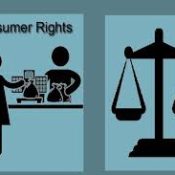
Civil & Criminal Litigation: Navigating Disputes Through the Scales of Justice
The justice system is designed to resolve conflicts, protect rights, and uphold the rule of law. At its core lie two distinct yet interconnected branches: civil litigation and criminal litigation. While both serve the cause of justice, they differ in nature, process, and outcomes.
⚖️ Understanding Civil Litigation
Civil litigation deals with disputes between individuals, organizations, or entities where one party seeks compensation or relief rather than punishment.
Examples: Contract disputes, property conflicts, tort claims, family matters, and consumer grievances.
Objective: To restore rights, provide monetary damages, or enforce agreements.
Burden of Proof: Based on the preponderance of evidence — proving that a claim is more likely than not to be true.
⚖️ Understanding Criminal Litigation
Criminal litigation involves cases where an individual or entity is accused of committing an offense against the state or society.
Examples: Theft, fraud, assault, drug offenses, and homicide.
Objective: To punish wrongdoers, maintain public order, and deter future crimes.
Burden of Proof: Requires evidence beyond a reasonable doubt, given the serious consequences such as imprisonment or fines.
📌 Key Differences Between the Two
Parties Involved – Civil cases involve a plaintiff vs. defendant; criminal cases involve the state (prosecution) vs. accused.
Outcome – Civil litigation leads to compensation or enforcement; criminal litigation may result in penalties or incarceration.
Impact – Civil disputes affect private rights, while criminal cases impact society at large.
⚖️ The Interplay of Civil and Criminal Law
Certain actions can lead to both civil and criminal proceedings. For example, fraud may trigger a criminal trial for punishment and a civil lawsuit for recovery of financial losses.
✅ In conclusion, civil and criminal litigation together form the backbone of justice. While civil litigation seeks to resolve conflicts and restore rights, criminal litigation upholds accountability and protects society. Both ensure that fairness and justice remain guiding principles in law.
All Categories
Recent Posts
Consumer Protection Law: Safeguarding Consumer Rights
Tags





